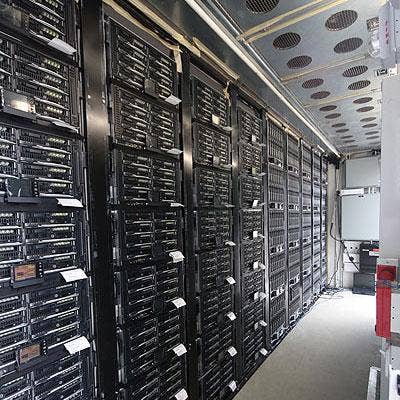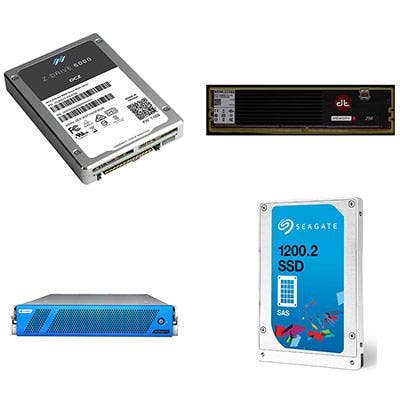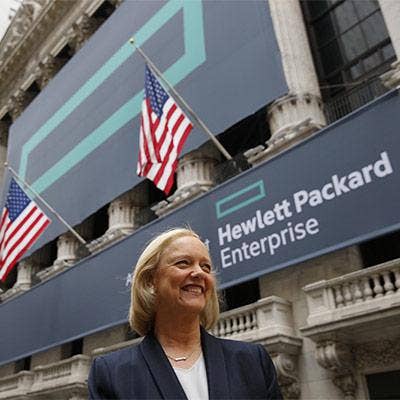IDC: Storage Sales Shift From On-Prem External Arrays Toward Cloud, Server-Based Storage

A Good Quarter, But …
Market researcher IDC in early December estimated that $9.1 billion worth of enterprise storage systems were sold worldwide during the third quarter of 2015. That was up 2.8 percent over the third quarter of 2014. Total capacity shipped saw a significant jump, up 31.5 percent over last year to reach 33.1 exabytes during the quarter.
However, the growth varied according to business type, with the storage business actually shrinking in the part of the market where solution providers primarily play. The quarter also showed a possible shift in vendor sales.
The devil's in the details, and the impact on solution providers' business varies according to their business model.
Let's take a look at what's happening.

First, A Word On What's Measured By IDC
Note that IDC measures storage sales in two ways.
The first is by disk storage system, which includes storage both in external storage arrays and sold as part of a server. The second is external disk storage, which includes arrays but not server-based storage. Both are important measures.
So where is storage faring well, and not so well? Read on.

Hyperscale Data Center Storage Is Booming
IDC said third quarter 2015 storage sales by ODMs (original design manufacturers) to hyperscale data centers rose 23.4 percent over the same period last year, to $1.3 billion.
While that is the smallest segment of the storage market, the high growth is significant because it indicates storage capacity may be shifting from on-premise infrastructure to the cloud. That is good news for anyone dealing with cloud-based applications and storage.
The news is less exciting to those who focus on the design and building of on-premises infrastructure.

On-Prem Storage Is Crawling
Aside from the smaller but faster-growing hyperscale data center business, IDC broke the rest of the storage market into two other areas.
Sales of server-based storage rose 9.9 percent over last year's quarter to reach about $2.1 billion, IDC said. This includes the storage capacity included in server sales.
The biggest part of the market, external storage systems, reached revenue of $5.8 billion in the quarter. However, that represented a 3.1 percent decline from last year.
The shift in how on-premise infrastructures are deployed is taking its toll, and with it bringing a potential impact on those who sell and deploy storage.
Let's look at why this is happening.

Trending Away From On-Premise External Storage Infrastructures
"Spending on traditional external arrays declined during the quarter as infrastructure refresh, coupled with the demand for software-defined storage and cloud-based storage, drove investments more heavily in server-based storage and hyperscale infrastructure," wrote Liz Conner, IDC's research manager for storage, in this month's research report.
Note the two primary trends pushing storage out of external arrays and into hyperscale data centers and servers: software-defined storage and the cloud. Software-defined storage is a software layer providing storage services, including such functions as deduplication, replication, snapshots and thin provisioning, using industry-standard server hardware. That leads to more storage being part of a server, or perhaps part of a low-cost JBOD [just a bunch of disks] solution. And the cloud, well, means little storage purchased locally in arrays or servers.

Highlight Of The On-Premise Storage Market: Flash Storage
The all-flash storage array market is doing quite well, IDC said.
Vendors of all-flash storage arrays generated $626.2 million in revenue during the third quarter, which was up 60.8 percent year over year.
Sales of hybrid flash arrays, which combine disk-based and flash-based storage in the same array, reached $2.4 billion in revenue for the third quarter, or about 26.5 percent of the entire storage market.
Now let's look at how the individual storage vendors did.

EMC: Still King, But Not For Long
EMC remained the world's largest storage vendor, with total storage systems revenue in the third quarter of 2015 of about $1.7 billion, IDC reported. That gives it a 20.5 percent share of the total disk storage systems market, or a 30.7 percent share of the external disk storage systems market.
However, EMC is facing headwinds. Total EMC sales dropped 8 percent from last year, which wasn't a big drop compared with many of its competitors. But given the uncertainty and the unusually large amount of media coverage, much of it negative, surrounding Dell's plan to acquire EMC, it would not be a surprise to see sales dip below those of last year in the upcoming quarters.

HPE: A Winner Among The Top Vendors
Hewlett Packard Enterprise -- which until it became a separate entity in November was part of Hewlett-Packard -- was the big winner in terms of disk-based storage sales of the industry's top storage vendors.
IDC estimated that HPE sold $1.5 billion worth of disk-based storage, including capacity in storage arrays as well as in servers, in the third quarter of 2015, which was up about 16 percent over the same period of last year. That gave HPE second place after EMC. In terms of external storage systems, HPE's sales rose 5.3 percent over last year to reach $598.4 million, giving it third place behind EMC and NetApp.
If HPE's storage sales continue to rise, and EMC's continue to slip, HPE could soon take over as the top total storage systems vendor. HPE is also within reach of taking NetApp's position as the second-largest external storage systems vendor.

NetApp Sliding
NetApp remains the second-largest storage-focused vendor after archrival EMC, but its storage sales slipped the most, or the second-most, depending on how they are measured.
NetApp's total disk storage system revenue for the third quarter was $651 million, down a significant 12.8 percent from the same quarter of last year, IDC estimated. NetApp last month blamed its sales drop on issues related to customers' slower-than-expected adoption of its Clustered Data Ontap platform.
That was still enough to give it an 11.3 percent market share in the external storage systems market, although its lead over fast-climbing HPE eroded significantly. However, because NetApp does not have a server business, its third-quarter revenue was only enough to give it a fourth-place position in the total storage systems market behind EMC, HPE and Dell.

Server Business Saves Dell?
Dell's total disk storage systems dipped a bit in the third quarter of 2015 compared with the same quarter last year, as did the total external disk storage business as a whole. For Dell, the drop in sales was mitigated by a 7.3 percent rise in sales of servers, according to IDC, which provided an opportunity to increase server-based storage capacity.
Dell's disk storage systems revenue in the third quarter totaled $899.4 million, with a market share of 9.9 percent, according IDC. That gave Dell its customary No. 3 position in the market.

IBM The Biggest Loser
IBM's sale this year of its server business to Lenovo was reflected in a huge drop in its total disk storage systems sales in the third quarter.
IBM's total third-quarter disk storage systems revenue was $584.6 million, down 32.5 percent from the same period of last year, which reflected the loss of storage that was sold through its server sales, IDC said.
However, even without counting its lost server-based storage business, IBM's external disk-based storage sales were already slipping on their own. IBM's external disk-based storage revenue fell 9.6 percent from that of last year's third quarter, to $533.8 million, IDC reported.

Hitachi Takes A Hit
Third-quarter 2015 sales of external disk-based storage systems from Hitachi, which primarily comes from Hitachi Data Systems, fell to $451.2 million, off a big 11.3 percent from those of the third quarter of 2014, IDC estimated.
That gave Hitachi and Hitachi Data Systems the No. 5 position in the market.

The Big Winners? Everybody Else
Vendors outside the top brands, especially the ODM vendors, did very well in the third quarter of 2015, IDC said.
ODM direct sales of disk-based storage system, which includes companies that sell direct to hyperscale data center customers, rose a fast 23.4 percent over last year's same quarter, to reach $1.3 billion, or 13.7 percent of the market, according to IDC.
The "Others" category of vendors also did well. In the total disk-based storage systems market, these vendors sold $2.6 billion worth of storage, which was up 15.2 percent over last year. Sales for these vendors of external disk-based storage systems also did well, rising 8.4 percent over those of last year, to reach $1.8 billion, IDC estimated.